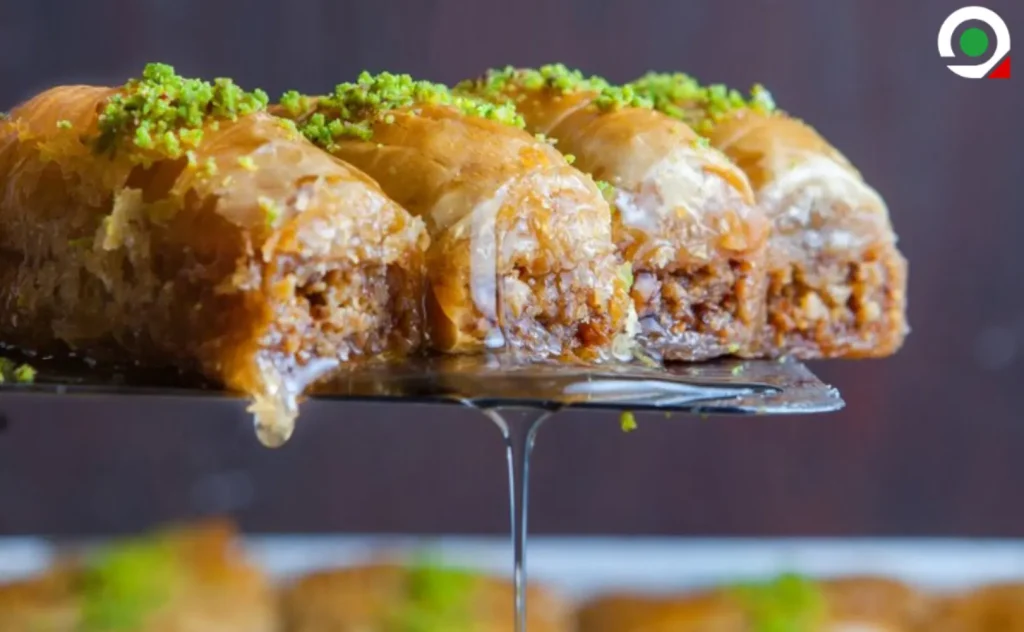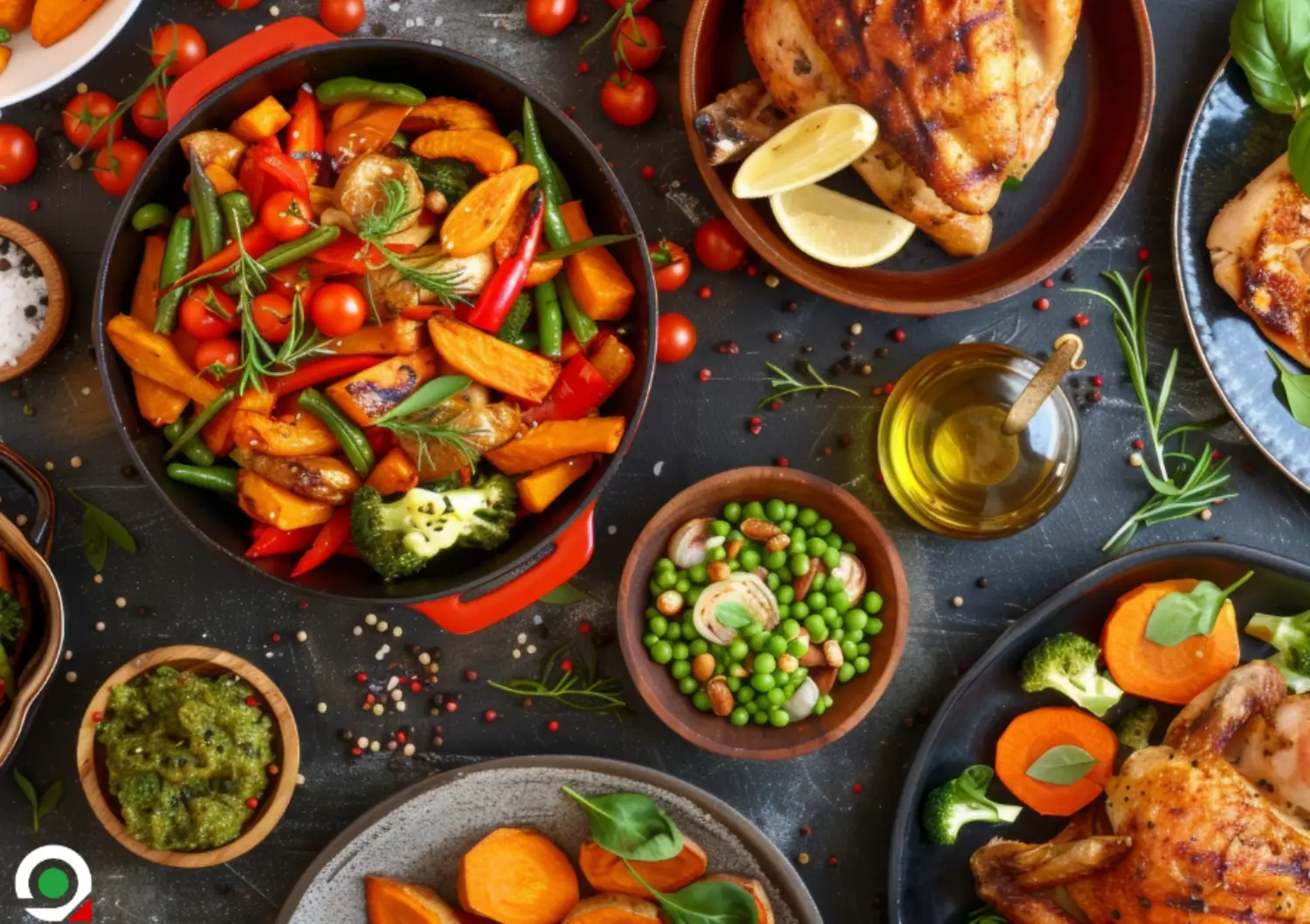Traditional Persian Dishes You Must Try
Traditional Persian Dishes
Persian cuisine is a delicious and flavorful experience that tells a story of a rich history and diverse cultural influences. Known for its fragrant rice, tender meats, and fresh herbs, Persian food is a true culinary adventure.
Whether you’re a seasoned food enthusiast or just curious about trying something new, Persian dishes offer something special for everyone. Let’s dive into the world of Persian cuisine and explore the must-try dishes that will make your taste buds sing!
The Rich History of Persian Food
Persian food has evolved over thousands of years, influenced by the ancient empires of Persia, as well as neighboring regions like India, Turkey, and the Arab world. This blending of cultures has resulted in a cuisine that is both diverse and unique. Meals in Persia have always been a central part of social gatherings, festivals, and celebrations, making Persian food an integral part of the country’s heritage.
check out our restaurant listing by clicking HERE.
Key Ingredients in Persian Cooking
Persian cuisine is defined by its use of fresh herbs, spices, and high-quality ingredients. Some of the essential ingredients you’ll find in Persian dishes include saffron, turmeric, dried lime, pomegranate, and a variety of herbs like parsley, cilantro, and mint. These ingredients help create the distinctive flavor profiles that make Persian food so memorable.
Persian Rice Dishes
Tahdig
One of the most iconic aspects of Persian cuisine is Tahdig, the crispy, golden layer of rice that forms at the bottom of the pot. Persian cooks take pride in achieving the perfect crunch, and it’s often the most coveted part of the meal. Tahdig can also be made with potatoes or bread for added texture and flavor.
Chelo
Chelo is the traditional Persian steamed rice served with a variety of dishes, from stews to kebabs. It’s a simple yet elegant dish, often garnished with saffron for extra color and aroma. Chelo provides the perfect base for many Persian meals.
Traditional Persian Stews (Khoresh)
Fesenjan
Fesenjan is a delightful stew made from ground walnuts and pomegranate molasses, creating a rich, tangy, and slightly sweet flavor. Traditionally served with chicken or duck, this dish is a favorite during special occasions and is a true reflection of the complex flavors Persian cuisine is known for.
Ghormeh Sabzi
Often considered the national dish of Iran, Ghormeh Sabzi is a herbaceous stew made with a mix of herbs, kidney beans, and tender lamb or beef. Its vibrant green color and tangy flavor from dried lime make it a standout dish. If you’re new to Persian food, Ghormeh Sabzi is a must-try.

Persian Grilled Kebabs
Kabab Koobideh
Kabab Koobideh is one of the most popular Persian kebabs, made from minced meat (usually lamb or beef) mixed with onions and spices. Grilled to perfection, it’s juicy, flavorful, and often served with rice or flatbread. Kabab Koobideh is a staple in Persian cuisine and a must-try for meat lovers.
Joojeh Kebab
Joojeh Kebab features tender chicken marinated in saffron, lemon, and yogurt, then grilled over an open flame. The result is a succulent, flavorful kebab that’s a favorite at Persian barbecues and family gatherings.
Popular Persian Soups and Sides
Ash Reshteh
Ash Reshteh is a thick, hearty soup made with noodles, beans, and a variety of herbs. It’s often served with a dollop of kashk (fermented whey) on top for added richness. This comforting dish is perfect for a cold winter day or as a starter to a larger meal.
Mirza Ghasemi
Mirza Ghasemi is a smoky, garlicky eggplant dip originating from northern Iran. Made with roasted eggplant, tomatoes, and garlic, it’s typically served with flatbread as a starter or side dish. The smoky flavor and smooth texture make it a popular choice.
Persian Bread Varieties
Sangak
Sangak is a traditional Persian flatbread baked on small stones, giving it a unique texture and flavor. It’s often served with cheese, herbs, or as an accompaniment to stews and kebabs. Sangak is a favorite at Persian bakeries and a key part of any meal.
Lavash
Lavash is a soft, thin flatbread that’s a staple in Persian cuisine. It’s versatile and can be used to wrap kebabs, served with dips, or enjoyed with cheese and herbs.
Persian Desserts

Baklava
Baklava is a sweet, flaky pastry made with layers of phyllo dough, nuts, and honey or syrup. Persian-style baklava tends to be lighter and less sweet than its Turkish counterpart, making it the perfect dessert after a rich meal.
Faloodeh
Faloodeh is a refreshing frozen dessert made from thin rice noodles, rose water, and lime juice. It’s a unique treat that offers a cool, sweet, and slightly tangy flavor, perfect for hot summer days.
Persian Drinks

Doogh
Doogh is a yogurt-based drink that’s tangy and slightly fizzy, often flavored with mint. It’s the perfect complement to rich, savory dishes like kebabs and stews, providing a refreshing contrast to the meal.
Persian Tea
Tea holds a special place in Persian culture and is often served throughout the day. Persian tea is strong and fragrant, typically brewed with loose tea leaves and served with sugar cubes or sweets.
The Role of Saffron in Persian Cuisine
Saffron, often referred to as “red gold,” is the star ingredient in many Persian dishes. Known for its delicate flavor, vibrant color, and unmistakable aroma, saffron is used in everything from rice dishes to desserts. Its use in Persian cooking is so prevalent that it’s almost synonymous with Persian cuisine. Whether sprinkled over rice or infused into stews, saffron elevates the flavor of any dish.
Vegetarian and Vegan Persian Options
Persian cuisine isn’t just about meats and stews—there are plenty of vegetarian and vegan-friendly options to explore. Dishes like Kuku Sabzi (a Persian herb frittata) and Dolmeh (stuffed grape leaves) offer plant-based options packed with flavor. Many Persian soups, rice dishes, and salads can also be easily adapted to suit vegetarian or vegan diets, making Persian food accessible to everyone.
Persian Food and Modern Fusion
As Persian cuisine gains popularity around the world, it has started to blend with other culinary traditions. This fusion has led to exciting new dishes that combine the flavors of Persian food with contemporary cooking styles. For example, you might find a Persian-inspired burger or a dessert that combines traditional Persian ingredients with modern techniques. The fusion trend shows how versatile and timeless Persian flavors can be.
Persian cuisine is a treasure trove of flavors, textures, and aromas that offer a little something for everyone. From the crispy rice of Tahdig to the complex stews like Fesenjan and Ghormeh Sabzi, Persian dishes are both comforting and exotic. Whether you’re enjoying a refreshing glass of Doogh or savoring the sweetness of Baklava, Persian food never fails to impress. So, if you’re looking to embark on a culinary adventure, start by exploring these traditional Persian dishes—you won’t be disappointed!
FAQs
1. What makes Persian cuisine unique?
Persian cuisine is known for its use of fresh herbs, delicate spices, and unique ingredients like saffron and pomegranate. The balance of flavors—sweet, savory, tangy—sets it apart from other cuisines.
2. Are Persian dishes spicy?
Generally, Persian food is not very spicy. While some dishes may contain mild heat from spices like pepper, the focus is more on aromatic herbs and subtle flavors.
3. Can I make Persian food at home?
Absolutely! Many Persian dishes are simple to prepare at home, especially rice dishes, stews, and grilled meats. With the right ingredients, anyone can enjoy Persian cooking in their kitchen.
4. What are common Persian food ingredients?
Common ingredients include saffron, turmeric, pomegranate molasses, dried lime, fresh herbs, and yogurt. These ingredients help create the distinctive flavors of Persian cuisine.
5. How should I eat Persian rice dishes?
Persian rice dishes are often served alongside stews or kebabs. The rice is typically eaten by mixing it with the main dish, allowing it to soak up the rich flavors of the stew or meat.
Join our community and stay updated on the Iranian Business Center by following us on Instagram!




Authentic Persian Cuisine: A Journey Through Iran's Flavors
[…] Food is at the heart of Iranian culture, symbolizing hospitality and togetherness. Meals are often served family-style, with everyone sharing from communal dishes. Bread is commonly used as a utensil, and eating with the right hand is customary. Guests are treated with great respect, and serving an abundance of food is a sign of generosity . Traditional Persian Dishes You Must Try […]